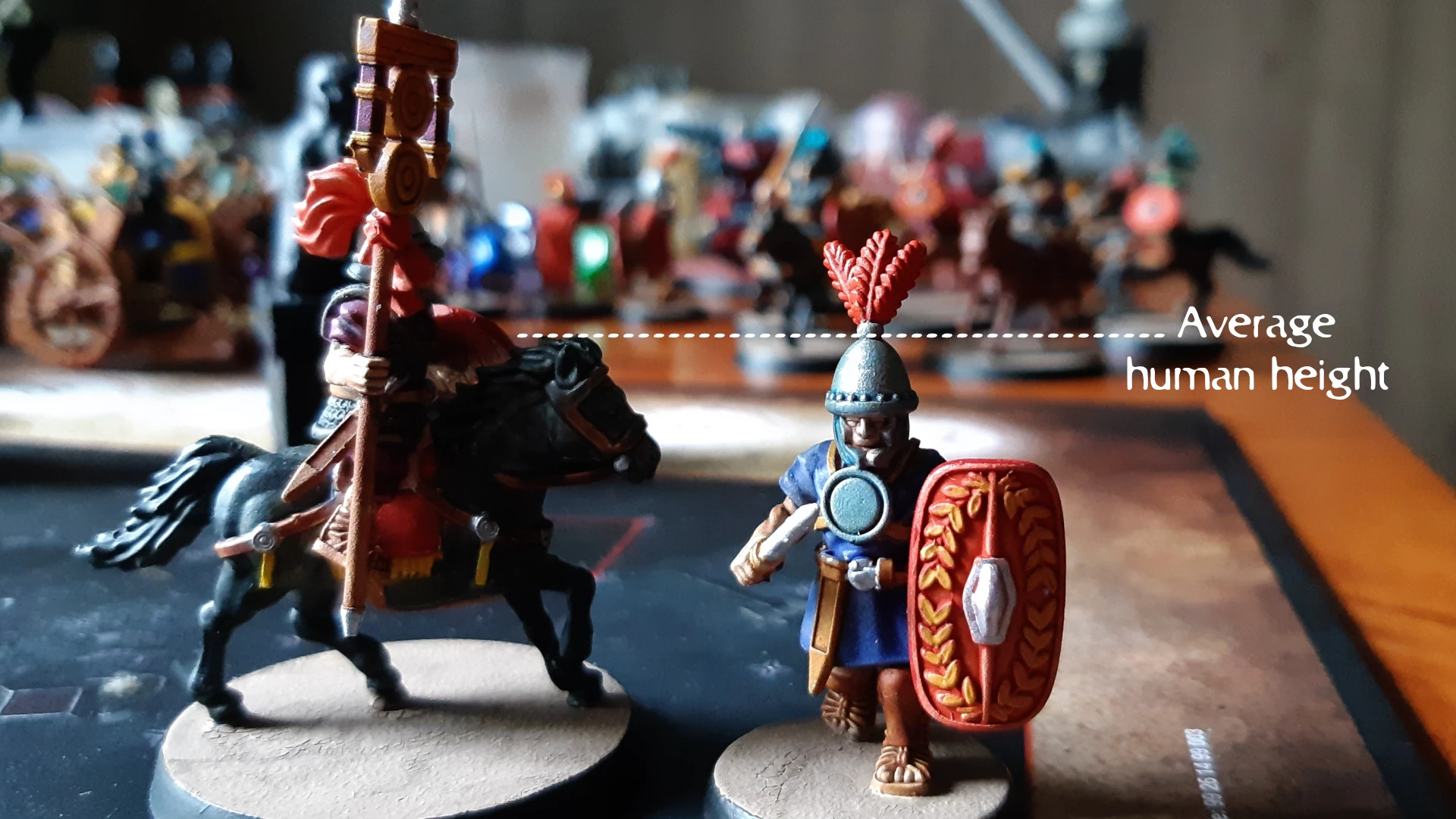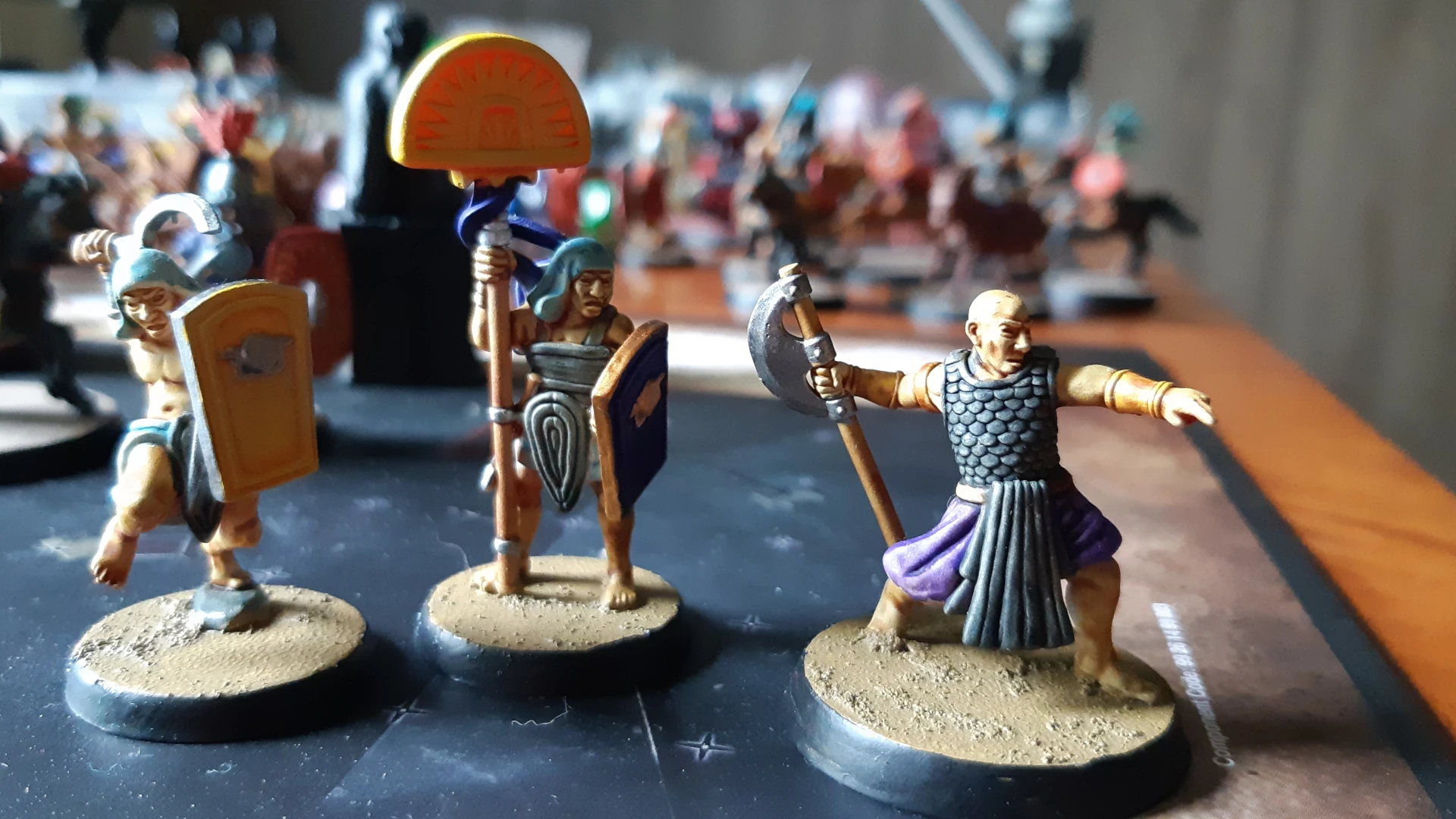The facts are these: in 175 CE, Gaius Avidius Cassius, a Syrian Roman general stationed in Egypt, declared himself Emperor of Rome. The problem was, Marcus Aurelius was already the Emperor of Rome and had been for years. It seems there was some miscommunication (or subterfuge, we're not sure which) that had made Cassius believe that Aurelius had died. Aurelius was legitimately ill, but he wasn't dead, nor was he, as it turns out, ready to abdicate his seat of power.
Cassius was an accomplished general, so he was able to gain support from Syria, Syria Palaestina, Arabia Petraea, and Egypt itself, and he controlled the military of Antioch and Cyrrhus. Even so, it seems that Aurelius was willing to forgive and forget the infraction, and apparently said he'd pardon Cassius, given the chance. However, the Senate was nervous about a potential schism in the Empire, and influential Roman citizens were outraged at the threat to the stability of Rome.
When Aurelius finally decided to take an army to Egypt, local citizens decided that the most efficient solution was to dispose of the rebel general. A lone centurion killed Cassius in July, before Aurelius even arrived, and Egypt affirmed its loyalty to Aurelius on 28 July 175 CE. The rebellion, such as it was, had lasted 3 months and six days.
Cassius lives
For my game, I imagined that Cassius had lived to fight Aurelius's army. In the first game of the campaign, I set up a Roman army on one side of the battlefield and an Egyptian army on the other. Cassius's troops hoped to intercept the Roman army en route to Antioch, and to represent that I set up three objective markers across the centre of the board. Secure all three objectives by the end of 6 rounds to create a blockade. Otherwise, the Romans make it through.
Unfortunately for Egypt, Rome wins the initiative roll and goes first.
Army notes
Fair warning, my historical army is a mess. Finding miniatures in New Zealand can be tough sometimes, so I ended up buying resin prints of miniatures by various STL designers. The printer I purchased from did his best, but some there were some comedic results.
First of all, the horses of the Roman cavalry got shrunk to fit on 28mm bases. The riders didn't, and I was able to detect the mismatch early on because the riders don't fit snugly on their mounts. So the horses are basically pony-sized, as you can see from a side-by-side comparison of cavalry and infantry, with the horses equal in height to a human (and with a normal sized human rider).

Secondly, the only Egyptian army I could find referenced Egypt's New Kingdom, which was way back before Rome even existed as a Republic, much less as an Empire dominating Egypt itself. I had two choices: Buy the anachronistic but iconic Egyptian army, or double-up on the Romans and just use different colour schemes to denote which army was which. Both options were pretty tempting, to be honest.
I could envision a gold and blue Roman Egyptian army, and thought it would look pretty cool compared to a silver and red and white Roman Imperial army. However, this had two problems: first, armies weren't that uniform back then. It would have been unlikely to find an entire army uniformly wearing blue tunics under their armour. And any way, I like to colour code the squads within my army to help myself keep track of power levels and abilities and initiative. If the whole army had to be uniform, it would be hard to differentiate between squads.
The New Kingdom army was dynamically posed (it was by a different sculptor than the Roman army), and iconic to any casual Egyptophile. I'm a sucker for ancient Egypt, and frankly until I started researching it for my historic wargames, you could have told me that Ramses II fought Aurelius and I'd have believed you. I didn't know when the pyramids had been built or even that Egypt was under Roman Empire rule. I've seen those mind-blowing statistics that point out that, for instance, we're closer to Cleopatra VII than she was to the pyramids but I never really understood how that was possible until I read a history book or two.

What I'm trying to say is that I'm a fan of Egypt in the same way that somebody who's never picked up a comic book is an Avengers fan (incidentally, as a Batman and Wonder Woman reader, I qualify for that, too). I bought the classic Egyptian army, and I'm perfectly happy with it. It's not historically correct, but that's why I talk about a kopesh squad and a chariot in my battle report.
Round 1
The Romans have two cavalry squads, so Aurelius leads his squad straight to the centre objective. They don't have enough movement to get within 8 cm (3 inches) so they can't secure it this round.
Choosing to go slow and steady, the Egyptian kopesh squad and battle axe squad advanced cautiously with no attacks during the first round. My Roman army's super power is the equites, but the Egyptian super power is archery. The archery squad didn't both advancing at all, and sent a volley of arrows out at the Romans, scoring 2 Hits (in this game, a Hit is not a Kill).
Round 2
Aurelius and his equites squad secure the centre objective, and the Egyptian battle axe squad continues to move to the centre in hopes of claiming the objective next round. The Roman gladius squad moves to the North objective, while the Egyptian kopesh squad moves to the South objective.
Cassius (cosplaying as Ramses II in a chariot) tries to stir up chaos among the advancing legion. He strikes at the gladius squad first, scoring a Hit.
Those pesky Egyptian archers score 2 Kills against Aurelius's squad, but he's the only soldier holding the objective at the end of the round and so the Romans score a Victory Point for that. Because the Egyptians scored one or more kills this round, though, they also get a Victory Point.
Score so far:
- Rome: 1 VP
- Egypt: 1 VP
Round 3
The second Roman equites maniple arrives as reinforcements for Aurelius, and just in time. The Egyptian battle axe squad move in on the objective and attack. They score a Hit, but the Dice Strength of the Romans still outweighs the Egyptians, so the objective still belongs to the Empire. The equites strike back, scoring some Hits.
In the meantime, each force secures an objective to the North and the South.
Cassius is still darting across the battlefield trying to score against the Romans, and while the gladius maniple tries to deal with him, he's way too mobile for them.
The Egyptian archers fire again and score several Hits but no Kills.
With so many Hits acquired, nearly everybody on the battlefield is at Kill strength for the next round.
Score so far:
- Rome: 3 VP
- Egypt: 2 VP
Round 4
Blood bath! The equites takes out two battle axe soldiers and scores more Hits besides, and the battle axe line in turn takes out two Equites. The archers take out two soldiers of the gladius maniple, and so Cassius moves in to dominate that objective.
It's a tie.
Score so far:
- Rome: 5 VP
- Egypt: 5 VP
Round 5
The Roman spearmen forming the pilum maniple has held back up until now, but in this round they reached the kopesh line to the South. Pilum against swords is a tough match, and it goes as well for the Romans as you'd expect. They score 3 Hits, although they do have to move into actual melee range to do so, meaning that their front line is vulnerable to a return strike from the kopesh squad. That's exactly what happens, but the Egyptians can only attack from their front line (because their rear soldiers have no reach) and end up with no Hits. The two maniples are technically equal in strength, though, so the objective is contested and nobody gets a Victory Point for it at the end of the round.
Everybody else pretty much just sits on their objectives and takes swings at one another. Through some lucky rolling, the equites score a Kill against the battle axe maniple, which tips the balance toward Rome.
Score so far:
- Rome: 7 VP
- Egypt: 6 VP
Round 6
In the final round, the Roman pilum maniple seizes control of the North objective and the equites maintain their hold on the centre objective, and both maniples score kills. That's 3 Victory Points, which feels like a runaway victory.
The Egyptians do their best, but I think Cassius deciding to hold the South objective was ultimately a mistake. His super power is mobility, and he's basically unkillable with all his bonuses for being a named character, so he should have kept doing hit-and-run attacks in an attempt to chip away at the Imperial forces.
The archers score a kill, and the South objective still belongs to Cassius, but that's not enough to win the game.
Final score:
- Rome: 10 VP
- Egypt: 8 VP
Next time
As the victors, the Romans are going to replenish their forces and then continue their march toward Antioch. Their goal is to break into the military outpost there and acquire the official seal of Cassius so they can forge his military resignation and distribute his surrender across Egypt. The Egyptians, of course, will defend the outpost.
Photos Creative Commons cc0.